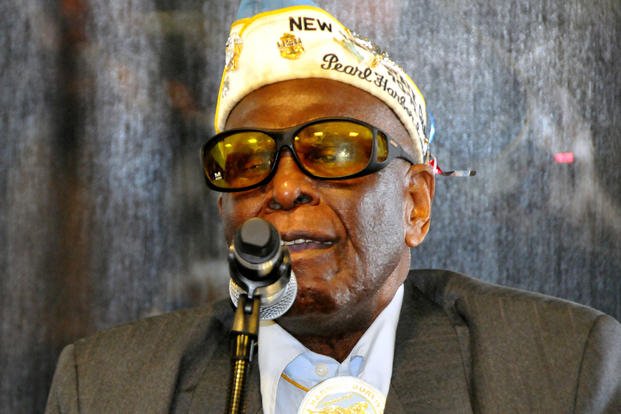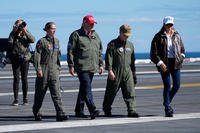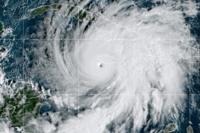USS Utah survivor Clark Simmons describes what he endured during the Japanese attack on Pearl Harbor.
"When you joined the Navy there was only one branch ... open to you, and that was serving the officers."
Excerpted from interviews taken for the National Geographic program, "Pearl Harbor: Legacy of Attack," on the National Geographic Channel
I came from a family -- my mother & four of us ... I was the only boy. I had three sisters, and I was the oldest. My father was killed at a very young age, and so I thought ... by joining the Navy, I'd be able to help my family. ...
Well, I really didn't understand the depths of the segregation that went on in the Navy ... when I first went in. In training, there were World War I stewards and cooks who were our instructors, ... and they instructed us as to what our duties would be once we got aboard ship or in the station, ... and they instructed us [as to] what it would be to work with officers -- or work for officers -- rather than with them.
And it was a very intimate situation between the officers and the steward mates of the mess attendants at that time, because you took care of all of their personal needs: their shoes, their bedding, their laundry. You made sure of their food and, and all of those things. And you knew everything there was to know after a while. ...
[When you joined the navy,] there was only one branch ... open to you, and that was serving the officers. You ... started off as a mess attendant, and if you were fortunate, you worked up to be a steward, or a cook, officers' steward or officers' cook. ...
Well, we went through the training and ... they outlined that our job was essential, because if the officers were happy, then the rest of the crew were happy. So ... it was just a job ... and as odd as it may seem, it was a lot of white sailors who would have loved to have been able to ... serve in that capacity.
I had been aboard the Utah a little better than two years ... and ... we used to run a six-week cycle of training. We drew personnel from the fleet and trained them in gunnery, flag control ...
We also were a mobile target, and there were planes that would do night bombing on us and daylight bombing ... and bombs would physically drop on the ship. And once that six-week cycle was over, we would come into port, discharge those men back to their ship, replenish the ship, repair it for all the damages that was done during the bombing, and we'd start a new class.
[The weekend of December 7,] ... we had just finished the six-week cycle. We came in early afternoon on Friday, and we went into what we call Fox 11, which is on the west side of Ford Island. The Lexington, the carrier Lexington, had moved out that morning, and we moved into the berth where they were originally. So apparently when the, the reconnaissance plane for the Japanese had taken that picture that Saturday, they had penned in carriers ... on the west side of Ford Island, which was the Lexington.
So ... that Friday, I had gone out from the ship, tied up ... gone to the beach to Honolulu, did some shopping for the officers, shopping for myself, came back; and Saturday morning, I did the same thing and then came back and then went back on the beach for that Saturday evening. We had what we called Cinderella Liberty, which meant that we had to be aboard ship by 12:00 that night. So I came in about 11:30 ... and went to sleep.
That morning ... a Black man who was on duty came down ... and said that something was happening and we were under attack. And he thought the ship in front of us had blew up. But what really had happened was, the Japanese had made a run on us, and the first torpedo that they had sent into the Utah had gone through the bulkhead and ran up onto the beach.

And when this young man came down, ... there were several of us in the compartment. I looked out ... on the port side, toward Pearl City ... and as I looked out the port, I saw a plane making a run on the Utah. And as she dropped her, the torpedo, the wing dipped and then straightened up, and the torpedo headed for the Utah. And another one right behind it did the same thing.
And as it hit the ship, we felt the jar, but the torpedoes did not explode. They went right into the hull of the ship and let water in. And at that time, the bugler sound -- man your battle stations, which our battle station was below deck. [We] went down, and there was water coming through the ship. It was knee deep.
When I first went down to what they call a battle station, we all were frightened. We didn't know what was going on. But we knew the ship was taking water in, and there was no way to close the water tight doors ... it was just a matter of time before the ship was going to sink. And actually it took eight minutes. ... [In] eight minutes, the ship was history. ...
The next command was abandon ship, ... and ... the engineer officer, the communications officer and myself, we hit the captain's cabin about the same time. And luckily, they had ... three ports ...about 18 inches in diameter. And just by design, each one of us picked one of the port holes. And the fortunate thing was that neither one of us -- I don't know, just a sixth sense -- we did not put the life jackets on ... And so we just threw them on the deck in the cabin, and at that time, the furniture was beginning to break loose. So we went through the ports ... And there's a walkway outside of the ...captain's cabin, and we got to that.
And we got to the rail of the ship ... And as we did that, the lines were beginning to part, because the ship was listing to the port, that by then was 40- to 45-degree list. She was turning over, and as we got to this walkway and went to the railing, the lines were beginning to part and snap back into the ship. And we just went over the side into the water and [swam] for Ford Island, where the rest of our crew who had gotten off ... from other parts of the ship were at that time.
... It's just as vivid in my mind today as it was that day. ... I was hit either in the water or as I got on the beach. I don't know whether it's shrapnel or a gun wound. I was hit in the head, the shoulder and the leg. And one of the corpsmen, who is like a nurse aboard the ship, he noticed I was bleeding and ... he began to patch me up a little. And he said, "We better get you to the hospital." So I went to the first-aid station on Ford Island, and from there, they transferred me to the submarine base hospital.
I think my worst moment was when I woke up in the hospital, and I listened to the radio and they were saying what had really happened here. That was my first realization as to what impact that day had really meant. I knew that I had been hurt but I didn't realize, you know, what had happened to the rest of the fleet and the rest of the people. I didn't realize the ship was completely lost. I saw it turn over ... it all hadn't sank ... in until that Wednesday.
Dorie Miller and I were classmates in swimming in Norfolk, Virginia. And this was a big gentleman. He was a huge man, about 6'2", 225-235 pounds -- but the nicest guy that you ever want to meet. And we socialized a lot, even in Honolulu when I'd run across him on the beach and we would still ... talk. ... Dorie Miller was a mess attendant and he went to the West Virginia, and he left Norfolk before I did. I stayed back in Norfolk for a while, and he came out and was assigned to West Virginia.
[The Japanese] wanted to put the battleships out of commission. And when the West Virginia was hit, the captain and the ... executive officer ... were on the bridge. ... Dorie Miller went up and physically picked up the captain and brought him down to a first-aid station, and then he went back and manned a 50-caliber machine gun, which he had not been trained on.
This was a very courageous young man, and it's always believed that he should have gotten the Congressional Medal of Honor, although he got the Navy Cross. ...
He exemplified a hero ... in what he did that day. Dorie Miller got the Navy Cross, and he was the first Black during World War II to get that. ... He didn't [get] the congressional medal because he was Black. And ... the Navy, being what it was at that time, didn't want to set that kind of a standard.
Want to Know More About the Military?
Be sure to get the latest news about the U.S. military, as well as critical info about how to join and all the benefits of service. Subscribe to Military.com and receive customized updates delivered straight to your inbox.














